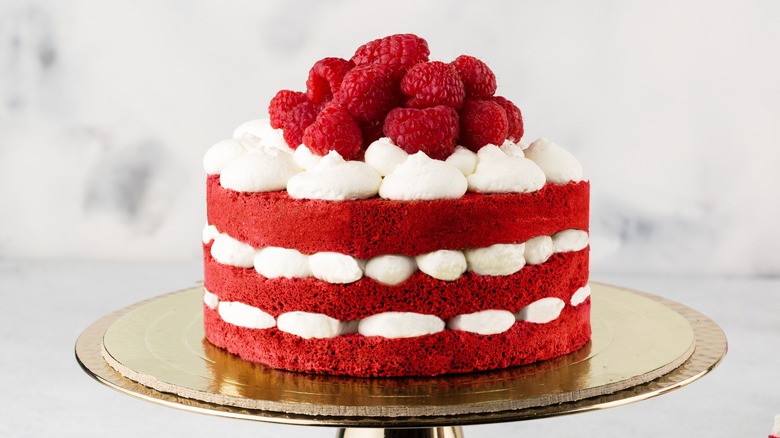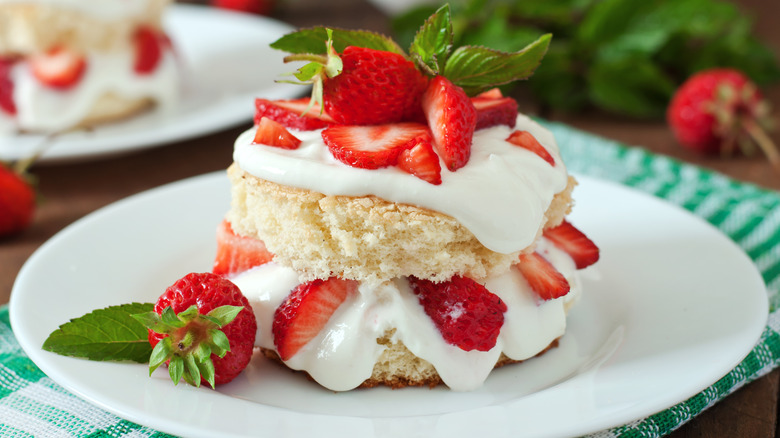For Perfectly Formed Cakes, Be Gentle With Your Oven Door
While some say baking is an art form, there's a fair amount of precision and care involved to get perfect results. One overlooked piece of advice for creating the best cake is that bakers must be careful when opening the oven to check on their cakes. Closing the oven door too hard and causing it to slam can disturb the cake inside, which may result in a sunken center. Closing the door carefully and quietly is most important when the batter is still wet, as the ingredients have not yet fully set and may be more vulnerable to booms and bangs.
When you slam the oven door, it creates vibrations that will negatively affect the stability of your baked goods. While you must exercise caution with all cakes, the risk is highest when dealing with especially fragile cakes. This is definitely true of cakes that lack leavening agents, including chiffon and angel food, sometimes referred to as foam cakes. The airy nature of these cakes means they're most susceptible to sinking, especially when you have a heavy hand with the oven door. However, all sorts of cakes can sink for other reasons.
Common causes of sunken cakes
Similar to slamming the oven door shut, moving a cake while baking can cause it to sink. Unfortunately, lots of cake recipes include directions to turn the cake to ensure even doneness, and it can be hard to follow these instructions while also leaving your cake undisturbed. Much like other aspects of baking, timing is everything. Don't move the cake until it's about three-quarters of the way done. That way the cake will be set enough to withstand a little jostling as you turn it.
For recipes that call for baking powder to help the cake rise, you must check the expiration date prior to using. Because baking powder is acidic, it generates air bubbles that allow a cake to rise to expected levels. Expired baking powder will not have the same effect, which leads to a less than ideal rise with cakes and other baked goods. While knowing why cakes sag can help you avoid baking catastrophes, you should also have rescue methods in your apron pocket.
How to fix a sunken cake
In the event your cake sinks despite your best efforts, you may be able to rescue it from the clutches of sogginess. If the cake is hopelessly soggy, add a filling to enhance structure as well as flavor. Cut around the sunken section and remove soggy cake using a spoon. Next, take your preferred filling and add it to the center. If you're not sure what to use, decorating with a combination of fruit, jam, and icing can work in a pinch. In this case, select fruits and jams that will work well with the flavor of the cake, such as strawberries and strawberry jam to decorate a sweet vanilla cake.
If the cake is just a little sunken, you may not need to take such drastic actions. In this case, take a knife with a serrated edge and trim away the top of the cake. Now the cake will have a level top perfect for decorating as you see fit. Keep in mind that this trick will only work when just a shallow portion of the cake has sunk. Otherwise, you're better off filling it in — or even cutting out small circles to create individual mini cakes, like strawberry shortcakes.


